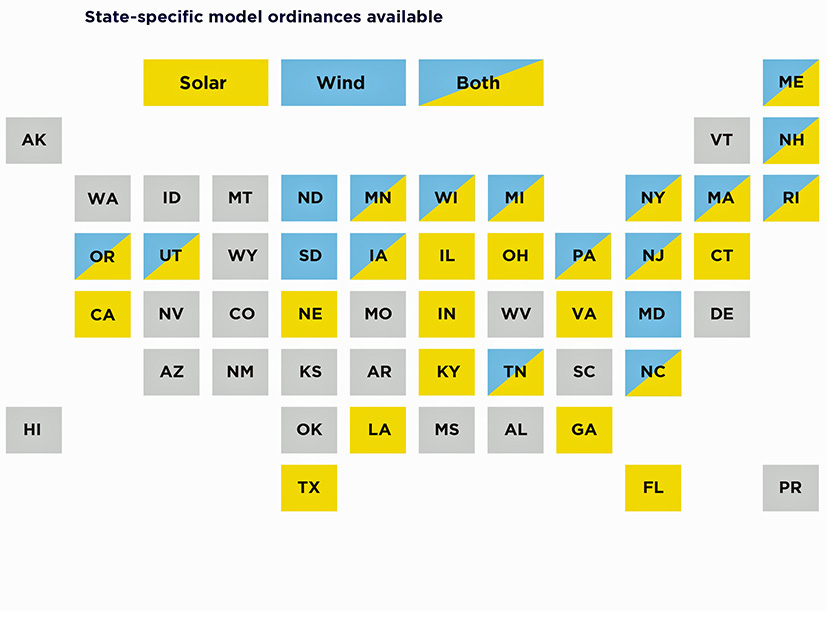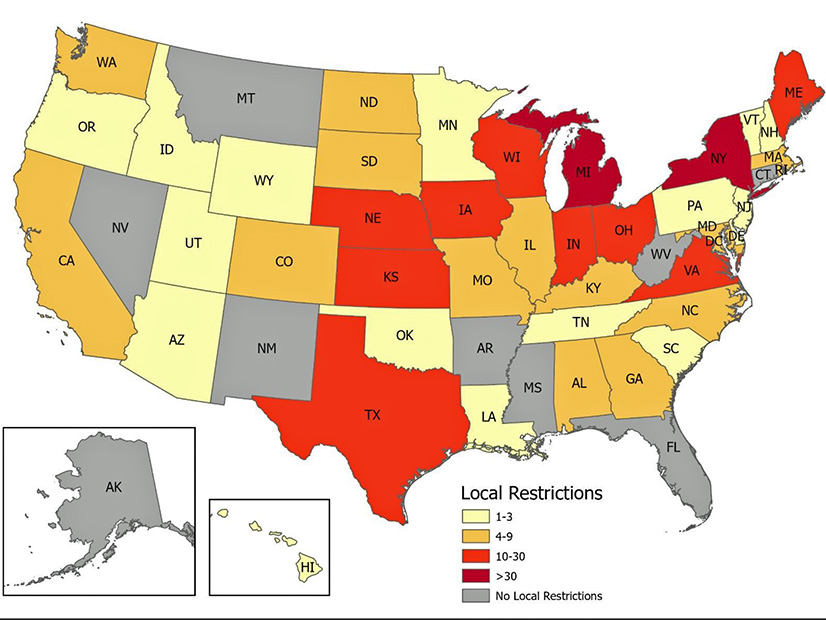Renewable Development Faces Regulatory Tangle
Reports Detail Growing List of State and Local Restrictions
Two new reports have been published on the profusion of local and state regulations affecting renewable energy development — one attempting to summarize them, the other quantifying the growing number of restrictions they impose.
“Laws in Order: An Inventory of State Renewable Energy Siting Policies” summarizes the renewable energy siting and permitting policies in the 50 states and Puerto Rico. One of its findings is that the approach to this type of regulation can be difficult to categorize because it varies widely from one state to the next.
“Opposition to Renewable Energy Facilities in the United States: June 2024 Edition” is an update of similar reports in 2021, 2022 and 2023. This year’s report finds 29% more contested projects nationwide than last year’s, along with 73% more local restrictions and 111% more state-level restrictions.
List of Laws
“Laws in Order” was prepared by the Regulatory Assistance Project and Clean Air Task Force with support from the Department of Energy, Lawrence Berkeley National Laboratory and Consensus Building Institute.
The team created an inventory of the siting and permitting policies that pertain to large-scale solar and onshore wind projects and the often-complex, layered mesh of approvals needed before construction can start.
The report provides a summary of the findings and draws a profile for each state and is accompanied by an interactive map. It also identifies the:
- entities within each state or territory that make siting and permitting decisions;
- level of government that has the authority to set standards for large-scale renewables siting and construction;
- requirements for public involvement;
- timelines that exist; and
- availability of permitting guides and model ordinances designed to support local decision-making.

Illustrating the highly varied nature of regulatory oversight, the report notes that 12 states give local governments principal jurisdiction, the governments in five states and Puerto Rico hold jurisdictional authority, local and state governments share authority in six states, and oversight can fall to either the state or the local government in 27.
List of Obstacles
“Opposition to Renewable Energy Facilities” was produced by the Sabin Center for Climate Change Law at Columbia University.
Without making individual judgments on the hundreds of examples they cite, the authors conclude that as a whole, there is widening local opposition to renewable energy facilities that is a potentially significant barrier to achieving emission-reduction goals.
The report looked only at restrictions so severe that they have either killed a specific project or could limit or ban development of renewables. It catalogs 395 such restrictions at the local level and 19 at the state level in 41 states. It also identifies 378 renewable projects in 47 states that have encountered significant opposition.
Alaska was the outlier as the only state with no severe restrictions or significant controversies identified.
Polices that bear indirectly on renewable energy facilities — such as net metering, renewable energy standards or subsidies — are not included if they do not bear directly on renewables. But the authors note local governments increasingly taking action to oppose the infrastructure needed to support renewable energy facilities, such as transmission and battery storage.

